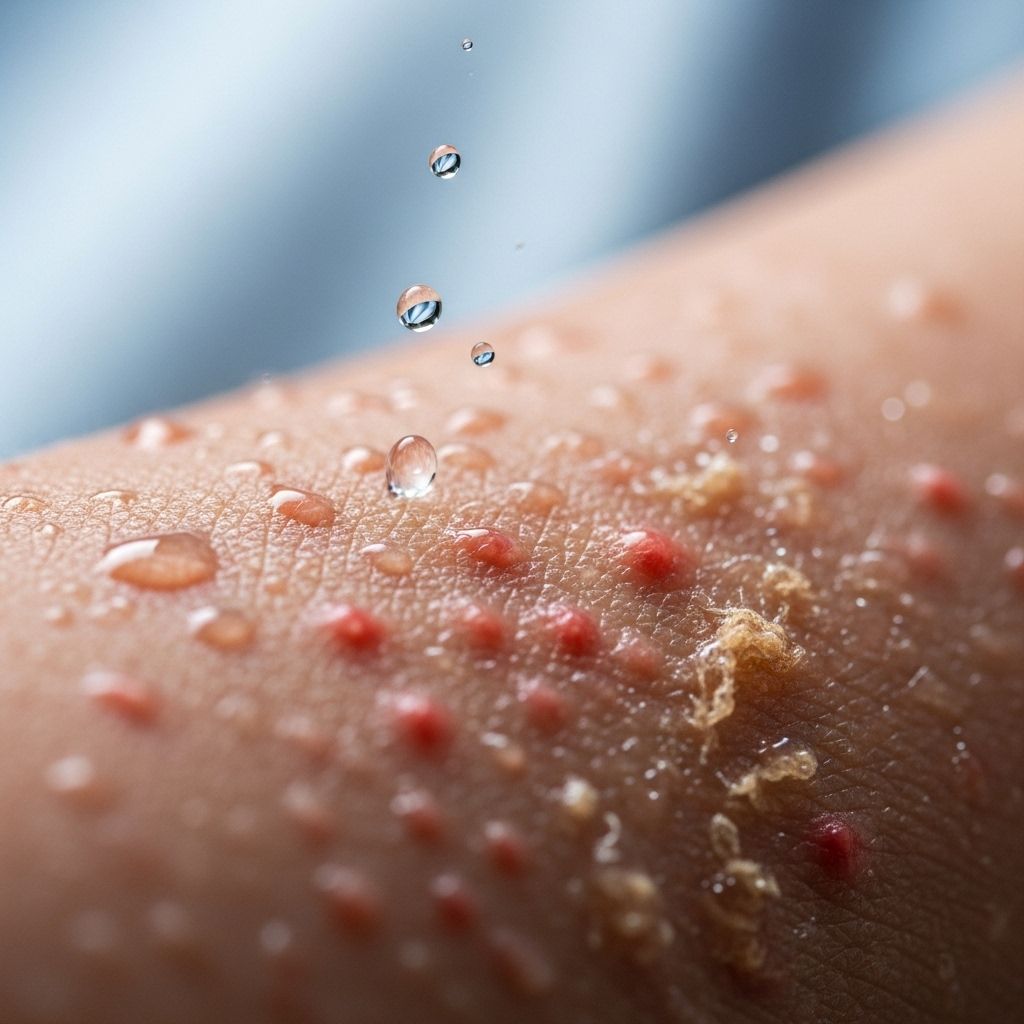Itchy After Hot Shower? Understanding Aquagenic Pruritus
Discover how understanding this unique itch response can improve daily comfort.

Introduction to Aquagenic Pruritus
Aquagenic pruritus is a rare and distressing skin condition characterized by intense, prickling-like itching that occurs after contact with water, regardless of its temperature. This condition can significantly impact an individual’s quality of life, as it affects daily activities like bathing and showering. Despite its distressing nature, aquagenic pruritus does not cause visible skin lesions, making it distinct from other water-related skin conditions like aquagenic urticaria.
What is Aquagenic Pruritus?
Aquagenic pruritus is not an allergy but rather a reaction to water, which can be triggered by various forms of water exposure, including showers, baths, rain, and even tears. The symptoms typically begin within minutes of exposure and can last for up to a few hours. The condition affects different parts of the body, most commonly the legs, arms, chest, back, and abdomen, but it tends to spare the palms, soles, and mucous membranes.
Causes of Aquagenic Pruritus
The exact cause of aquagenic pruritus is unknown, but several factors are thought to contribute to its onset. These include increased mast cell degranulation, which releases histamine and other inflammatory substances, heightened fibrinolytic activity in the skin, and the release of acetylcholine, a neurotransmitter involved in nerve and muscle signaling. In some cases, aquagenic pruritus is associated with underlying conditions such as polycythemia vera, a blood disorder characterized by excessive production of red blood cells.
Secondary Causes
Secondary causes of aquagenic pruritus can include blood diseases like polycythemia vera, drug reactions, certain cancers, hepatitis C, and other conditions. Identifying these underlying causes is crucial because treating the primary condition can alleviate symptoms of aquagenic pruritus.
Symptoms of Aquagenic Pruritus
The primary symptom of aquagenic pruritus is intense itching that develops after contact with water. It can be accompanied by other sensations such as tingling, burning, or even pain. The itching usually begins shortly after exposure and can last for several minutes to hours. The lack of visible skin lesions distinguishes aquagenic pruritus from other dermatological conditions like aquagenic urticaria.
Diagnosis of Aquagenic Pruritus
Diagnosing aquagenic pruritus is challenging due to the absence of specific diagnostic tests. Instead, healthcare providers rely on excluding other potential causes of itching. A thorough medical history and physical examination are essential to rule out conditions like polycythemia vera and other systemic diseases that could cause similar symptoms.
Treatment of Aquagenic Pruritus
Treatment options for aquagenic pruritus focus on symptom relief, as there is no cure for the condition. Common treatments include:
- Antihistamines: These are often the first line of treatment, though their effectiveness can vary. Both H1 and H2 antihistamines may be used.
- Topical Hyoscine: This has been reported to provide relief in some cases.
- Phototherapy: Ultraviolet light therapy, such as UVB or PUVA, can be effective for some patients.
- Psychological Support: Given the distressing nature of the condition, psychological support is important.
Alternative Treatments
Sodium bicarbonate added to bath water and beta-alanine supplements have also been suggested as alternative treatments. However, these are not universally effective, and more research is needed to confirm their efficacy.
Frequently Asked Questions (FAQs)
Q: Is aquagenic pruritus the same as aquagenic urticaria?
A: No, aquagenic pruritus and aquagenic urticaria are different. Aquagenic urticaria involves hives and red plaques after water contact, whereas aquagenic pruritus causes itching without visible lesions.
Q: Is there a cure for aquagenic pruritus?
A: There is no cure for aquagenic pruritus, but symptoms can be managed with various treatments.
Q: Can diet affect aquagenic pruritus symptoms?
A: While specific dietary factors are not well-studied, maintaining overall health and managing stress can help alleviate symptoms.
Living with Aquagenic Pruritus
Managing aquagenic pruritus requires a combination of medical treatment and lifestyle adjustments. Avoiding behaviors that exacerbate itching and maintaining open communication with healthcare providers are crucial. For some individuals, aquagenic pruritus can lead to psychological distress, such as anxiety about bathing, so psychological support is important.
Future Research and Understanding
Further research is needed to fully understand the mechanisms behind aquagenic pruritus and to develop more effective treatments. Understanding the condition’s pathophysiology could lead to targeted therapies and improved symptom management for those affected.
Summary
Aquagenic pruritus is a complex condition with no cure, but it can be managed with appropriate treatment and lifestyle adjustments. Its impact on daily life underscores the importance of continued research into its causes and potential treatments.
References
- https://pmc.ncbi.nlm.nih.gov/articles/PMC3179019/
- https://www.ducray.com/en/itching-sensations/causes/aquagenic-pruritus
- https://en.wikipedia.org/wiki/Aquagenic_pruritus
- https://www.medicinenet.com/does_aquagenic_pruritus_go_away/article.htm
- https://my.clevelandclinic.org/health/diseases/22516-aquagenic-pruritus
- https://dermnetnz.org/topics/aquagenic-pruritus
- https://www.prosperabiotech.com/en/blog/acuagenic-pruritus-itching/
- https://allergyasthmanetwork.org/chronic-urticaria/aquagenic-urticaria/
- https://rarediseases.org/rare-diseases/aquagenic-urticaria/
- https://www.healthline.com/health/aquagenic-urticaria
Read full bio of medha deb












